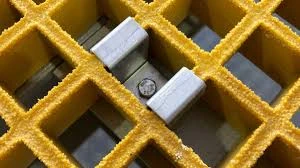
-
 Afrikaans
Afrikaans -
 Albanian
Albanian -
 Amharic
Amharic -
 Arabic
Arabic -
 Armenian
Armenian -
 Azerbaijani
Azerbaijani -
 Basque
Basque -
 Belarusian
Belarusian -
 Bengali
Bengali -
 Bosnian
Bosnian -
 Bulgarian
Bulgarian -
 Catalan
Catalan -
 Cebuano
Cebuano -
 China
China -
 China (Taiwan)
China (Taiwan) -
 Corsican
Corsican -
 Croatian
Croatian -
 Czech
Czech -
 Danish
Danish -
 Dutch
Dutch -
 English
English -
 Esperanto
Esperanto -
 Estonian
Estonian -
 Finnish
Finnish -
 French
French -
 Frisian
Frisian -
 Galician
Galician -
 Georgian
Georgian -
 German
German -
 Greek
Greek -
 Gujarati
Gujarati -
 Haitian Creole
Haitian Creole -
 hausa
hausa -
 hawaiian
hawaiian -
 Hebrew
Hebrew -
 Hindi
Hindi -
 Miao
Miao -
 Hungarian
Hungarian -
 Icelandic
Icelandic -
 igbo
igbo -
 Indonesian
Indonesian -
 irish
irish -
 Italian
Italian -
 Japanese
Japanese -
 Javanese
Javanese -
 Kannada
Kannada -
 kazakh
kazakh -
 Khmer
Khmer -
 Rwandese
Rwandese -
 Korean
Korean -
 Kurdish
Kurdish -
 Kyrgyz
Kyrgyz -
 Lao
Lao -
 Latin
Latin -
 Latvian
Latvian -
 Lithuanian
Lithuanian -
 Luxembourgish
Luxembourgish -
 Macedonian
Macedonian -
 Malgashi
Malgashi -
 Malay
Malay -
 Malayalam
Malayalam -
 Maltese
Maltese -
 Maori
Maori -
 Marathi
Marathi -
 Mongolian
Mongolian -
 Myanmar
Myanmar -
 Nepali
Nepali -
 Norwegian
Norwegian -
 Norwegian
Norwegian -
 Occitan
Occitan -
 Pashto
Pashto -
 Persian
Persian -
 Polish
Polish -
 Portuguese
Portuguese -
 Punjabi
Punjabi -
 Romanian
Romanian -
 Russian
Russian -
 Samoan
Samoan -
 Scottish Gaelic
Scottish Gaelic -
 Serbian
Serbian -
 Sesotho
Sesotho -
 Shona
Shona -
 Sindhi
Sindhi -
 Sinhala
Sinhala -
 Slovak
Slovak -
 Slovenian
Slovenian -
 Somali
Somali -
 Spanish
Spanish -
 Sundanese
Sundanese -
 Swahili
Swahili -
 Swedish
Swedish -
 Tagalog
Tagalog -
 Tajik
Tajik -
 Tamil
Tamil -
 Tatar
Tatar -
 Telugu
Telugu -
 Thai
Thai -
 Turkish
Turkish -
 Turkmen
Turkmen -
 Ukrainian
Ukrainian -
 Urdu
Urdu -
 Uighur
Uighur -
 Uzbek
Uzbek -
 Vietnamese
Vietnamese -
 Welsh
Welsh -
 Bantu
Bantu -
 Yiddish
Yiddish -
 Yoruba
Yoruba -
 Zulu
Zulu
inserting rock bits techniques and strategies for efficient ...
Inserting Rock Bits Techniques and Strategies for Efficient Drilling Operations
In the demanding field of drilling engineering, the efficiency of operations often hinges on the tools and techniques employed. One critical component of this process is the rock bit, which penetrates various subsurface materials, facilitating the extraction of resources such as oil, gas, and minerals. Implementing effective strategies for inserting rock bits can significantly enhance drilling performance, reduce costs, and minimize downtime. This article outlines key techniques and strategies for optimizing rock bit insertion in drilling operations.
Understanding Rock Bits
Before delving into the techniques, it is essential to understand the different types of rock bits available in the market. The most common types include roller cone bits, fixed cutter bits, and PDC (polycrystalline diamond compact) bits. Each type serves specific geological conditions and drilling requirements. Selecting the appropriate rock bit is the first step towards ensuring efficient drilling. Factors to consider during selection include the type of rock, desired drilling depth, and wellbore stability.
Pre-Planning and Design
Effective insertion of rock bits begins with thorough pre-planning. This stage involves analyzing geological data and understanding the formation being drilled. Conducting a detailed site assessment allows engineers to anticipate potential challenges, such as hard rock formations or unstable strata. Additionally, the design of the drilling assembly, including the type of bits and drilling parameters, should be carefully tailored to the specific conditions of the site. Utilizing software tools for drilling simulation can help visualize different scenarios and optimize the design before operations commence.
Drilling Parameters Optimization
Adjusting drilling parameters is crucial for efficient rock bit insertion. Factors such as weight on bit (WOB), rotary speed (RPM), and mud properties play a significant role in penetration rates and bit longevity. Experimentation with these parameters is essential, as too much WOB can lead to bit damage, while too little can result in slower penetration rates. Maintaining the right balance is vital. Additionally, optimizing the mud properties, including viscosity and density, can enhance lubricant efficiency and cooling, thereby prolonging bit life and improving performance.
inserting rock bits techniques and strategies for efficient ...

Monitoring and Real-Time Data Analysis
In today’s drilling operations, real-time monitoring and data analysis are indispensable. Utilizing downhole sensors and surface monitoring systems allows operators to track performance metrics such as rate of penetration (ROP), vibration levels, and temperature at the bit. By analyzing this data, engineers can make informed decisions to adjust drilling parameters on-the-fly, ensuring optimal performance. Predictive analytics can also be employed to foresee potential issues before they arise, minimizing downtime and equipment wear.
Advanced Technologies in Rock Bit Insertion
The integration of advanced technologies has revolutionized the drilling industry. Automated drilling systems and robotic technologies can enhance the precision and efficiency of rock bit insertion. These systems reduce human error, enabling consistent drilling operations even in challenging environments. Furthermore, technologies such as managed pressure drilling (MPD) allow for better control over the drilling process, which is particularly useful in unstable geological formations.
Continuous Improvement and Learning
Finally, fostering a culture of continuous improvement and learning is essential for any drilling operation. Post-drilling analyses and reviews help identify successes and areas for improvement. Sharing knowledge and experiences among teams can lead to the development of best practices for inserting rock bits in future projects. Additionally, staying abreast of technological advancements and industry trends is crucial for maintaining a competitive edge.
Conclusion
Inserting rock bits efficiently is a cornerstone of successful drilling operations. By employing comprehensive pre-planning, optimizing drilling parameters, leveraging real-time monitoring, embracing advanced technologies, and fostering a culture of continuous improvement, drilling engineers can significantly enhance performance and reduce costs. As the demand for resources continues to rise, the development of innovative techniques and strategies for rock bit insertion will remain a critical focus for the industry, ensuring sustainable and efficient extraction operations.









